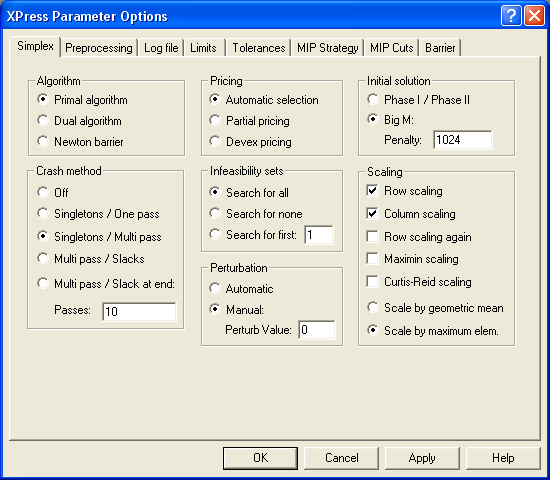
Figure 4.53: The XPRESS Simplex Options Dialog Box
You can change the Simplex options for XPRESS by choosing XPRESS parameters from the Options menu and then pressing the Simplex tab. This will display the dialog box shown below:

Figure 4.53: The XPRESS Simplex Options Dialog Box
| Option Name | MPL Name | Solver Param | ParamNr | Type | Default | Min | Max |
|---|---|---|---|---|---|---|---|
| Algorithm | OptimizeAlgorithm | list | 1 | 1 | 4 | ||
| Crash Method | Crash | Crash | 8012 | list | 2 | 0 | MAXINT |
| Pricing | Pricing | PricingAlg | 8013 | list | 0 | -1 | 1 |
| Infeasbility Sets | NumIIS | MaxIIS | 8131 | int | -1 | -1 | MAXINT |
| Automatic Perturb | AutoPeturb | AutoPeturb | 8084 | flag | 1 | 0 | 1 |
| Perturb Value | Peturb | Perturb | 7044 | real | 0 | 0 | MAXREAL |
| Initial Solution | UseBigM | BigMMethod | 8068 | flag | 1 | 0 | 1 |
| BigM Penalty | Infeas Penalty | BigM | 7018 | real | 1024.0 | 0 | MAXREAL |
| Scaling | Scaling | Scaling | 8010 | list | 35 | 0 | MAXINT |
The algorithm to used by the optimizer to solve the problem can be specified here. The default value is Automatic selection. Following are the four possible selections:
| Automatic selection (1) | Dual simplex for LPs and IPs; Newton barrier for QP. |
| Primal algorithm (2) | Use primal simplex algorithm. |
| Dual algorithm (3) | Use dual simplex algorithm. |
| Newton barrier (4) | Use Newton barrier algorithm. |
The type and severity of the crash to be performed for primal simplex can be choosing one of the following options:
| Off (0) | Turns off all crash procedures. |
| Singletons / One pass (1) | For singletons only (one pass). |
| Singletons / Multi pass (2) | For singletons only (multi pass). |
| Multi pass / Slacks (3) | Multiple passes through the matrix considering slacks |
| Multi pass / Slack at end (4) | Multiple (<=10) passes through the matrix but only doing slacks at the very end. |
| Passes (n>10) | As for value 4 but performing at most n - 10 passes. |
The Pricing option for primal simplex has the following possible selections:
| Partial pricing (-1) | Partial pricing is to be used. |
| Automatic selection (0) | The pricing strategy is to be decided automatically. |
| Devex pricing (1) | Devex pricing is to be used. |
Infeasbility sets controls the number of irreducible infeasible sets to be found. It has the following possible selections:
| Search for all (-1) | Search for all IIS. |
| Search for none (0) | Do not search for IIS |
| Search for first n (n) | Search for the first n IIS |
This indicates whether automatic perturbation is performed.
The factor by which the problem will be perturbed prior to optimization if you chose Automatic perturbation. A value of 0.0 results in automatically determined perturbation value.
The Initial Solution allows you to choose between the Phase I/Phase II method or the Big M method (the default) to obtain an initial feasible solution.
| Phase I / Phase II (0) | For PhaseI/PhaseII. |
| Big M (1) | Big M method to be used. |
The infeasibility penalty used if the "Big M" method is implemented".
It is always worth striving to create a well-scaled matrix during the formulation stage. This is not always easy to do, and so automatic scaling can be applied to improve the numerical stability, if the range of coefficient values of a matrix is very large. The following are the available scaling techniques:
Furthermore, you can choose between scaling by geometric mean or by maximum element. The default is Row and Column scaling, by maximum element.
Scaling of integer entities is not supported, though XPRESS will scale the continuous variables in a MIP problem. This means that you should be careful about the scale of the integer entities when formulating MIP problems.
| Row scaling (1) | |
| Column scaling (2) | |
| Row scaling again (4) | |
| Maximin scaling (8) | |
| Curtis-Reid scaling (16) | |
| Scale by maximum element (32) |